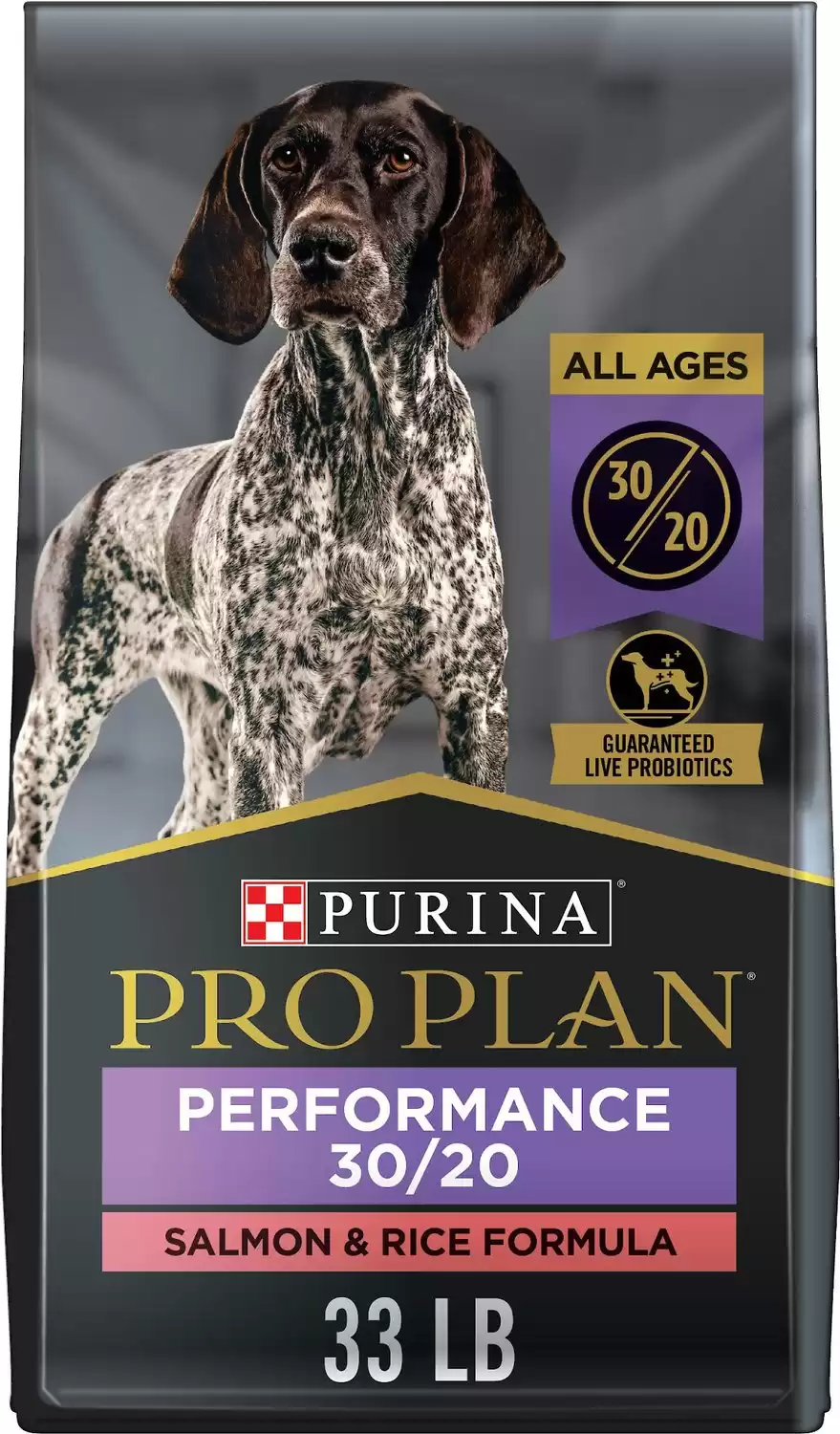Appenzeller Dog
Canis lupus
Appenzeller Sennenhund dogs serve as rescue animals in the Swiss Alps
Advertisement
Appenzeller Dog Scientific Classification
- Kingdom
- Animalia
- Phylum
- Chordata
- Class
- Mammalia
- Order
- Carnivora
- Family
- Canidae
- Genus
- Canis
- Scientific Name
- Canis lupus
Read our Complete Guide to Classification of Animals.
Appenzeller Dog Conservation Status
Appenzeller Dog Facts
- Fun Fact
- Appenzeller Sennenhund dogs serve as rescue animals in the Swiss Alps
- Temperament
- Energetic and alert
- Training
- Should be trained from an early age and respond best to firm and consistent training
- Diet
- Omnivore
- Average Litter Size
- 6
Appenzeller Dog as a Pet:
- General Health
- Energy Level
- Shedability
- Trainability
- Intelligence
- Tendency to Chew
- Size
- Family and kid friendliness
- Yappiness / Barking
- High
- Separation Anxiety
- High
- Preferred Temperature
- Cold climate
- Exercise Needs
- High
- Friendly With Other Dogs
- Moderate
- Pure bred cost to own
- $1000
- Dog group
- Herding
- Male weight
- 48-70 lbs
- Female weight
- 48-55 lbs
This post may contain affiliate links to our partners like Chewy, Amazon, and others. Purchasing through these helps us further the A-Z Animals mission to educate about the world's species.
View all of the Appenzeller Dog images!
Appenzellers are known as mountain dogs. So, it’s no surprise they are part of rescue teams that search for travelers who become lost or injured on the Swiss Alps.
The Appenzeller Sennenhund, also called an Appenzeller, is a colorful, energetic dog originally bred to herd cattle. In fact, they are categorized by the American Kennel Club as herding dogs. They are bright, affectionate canines with a strong instinct to protect their territory.
See all of our expert product reviews.
The pronunciation of the Swiss word Appenzeller is easy because it sounds just like it’s spelled. Sennen sounds just like its spelling, while the pronunciation of hund sounds like ‘wound.’
The history of this breed dates back to 1853 when these dogs were in charge of herding cattle on farms in Appenzell, Switzerland. They ran along, nipping at the heels of cows that strayed from the herd to get them back with the group. The intelligence, agility, and strength of the Appenzeller combined to make it a loyal worker and companion for a farmer.
An Appenzeller that’s socialized as a puppy is going to be a fun, devoted member of a family’s household.

3 Pros and Cons of Owning an Appenzeller Sennenhund
| Pros! | Cons! |
|---|---|
| A great watchdog An Appenzeller has a loud bark and is always on alert for strangers on the property. | Lots of exercise This dog is high-energy and needs vigorous exercise every day to keep it in good health. |
| Easy to train The intelligence of this mountain dog allows it to learn obedience lessons fairly quickly. | Wary of visitors Appenzeller take a bit of time to warm up to people visiting the household. This may be inconvenient for a family who has lots of friends and relatives over. |
| A long life These mountain dogs have a lifespan of 12 to 15 years but have been known to live much longer. | A loud bark If a family likes a quiet household, the booming bark of an Appenzeller may mean this dog is not the right fit for their home. |

©MyImages – Micha/Shutterstock.com
Size and Weight
An Appenzeller is a large dog with a double coat of fur. Males and females grow as tall as 22 inches at the withers. Male Appenzellers weigh up to 70 pounds, while females weigh up to 55 pounds. A 9-week-old puppy weighs around 10 pounds. These mountain dogs are not fully-grown until they reach 2 to 3 years old.
Health and Entertainment for your Appenzeller Dog
See all of our expert product reviews.
| Height (Male) | 22 inches |
| Height (Female) | 22 inches |
| Weight (Male) | 70 pounds fully-grown |
| Weight (Female) | 55 pounds fully-grown |
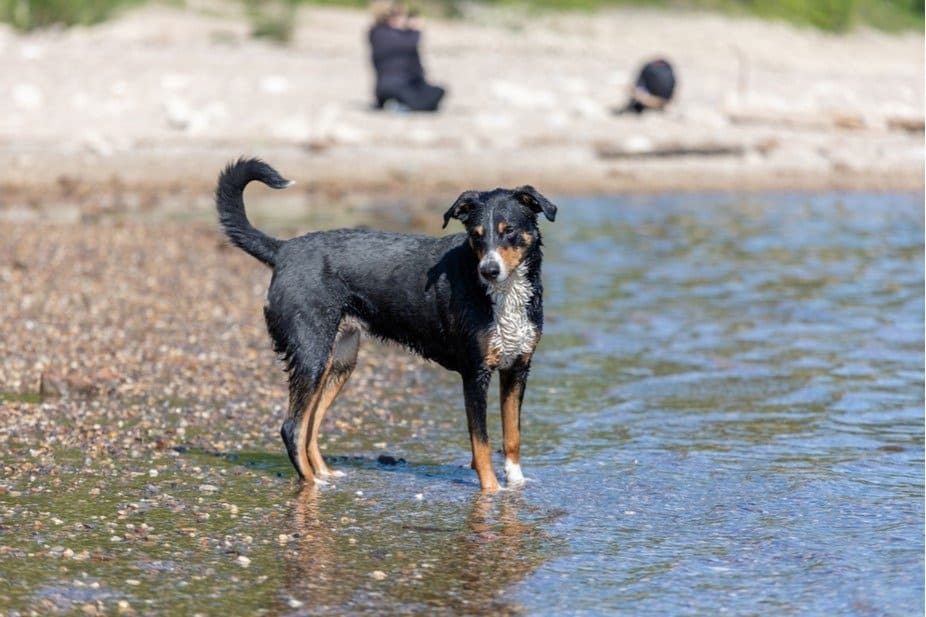
Appenzeller dogs weigh between 48-70 pounds.
©Vincent Scherer/Shutterstock.com
Origins
The Appenzell Cattle Dog, as it was called in 1853, has a high-pitched bark and short hair. It is a multi-colored dog that was originally bred to guard homes and herd cattle in its native Switzerland. Breed promoter Max Siber helped the Appenzeller become its own breed in 1898, and Professor Dr. Albert Heim established the Appenzeller Sennenhund Club the following year to promote and preserve the species. Dr. Heim also set up the first valid breed standard in 1914 and officially registered puppies in the Appenzeller Dog Stud Book. The Appenzellers can now be found all over Switzerland, Europe, and North America, though the breeding stock is still small. It is only through careful and responsible breeding that it can maintain its natural and outstanding hereditary qualities.
Common Health Issues
Appenzeller has a few health issues common to their breed. Hip dysplasia occurs when the ball and socket of a dog’s hip joint don’t develop or work in the proper way. A dog can experience pain and lameness as a result of hip dysplasia. Cataracts are another health challenge common to these cattle dogs. Cloudy eyes are a sign of cataracts. Cataracts can lead to reduced vision or even blindness. Epilepsy is a third issue for Appenzeller. This is an inherited condition that causes seizures.
The most common health issues of this cattle dog include:
- Hip dysplasia
- Cataracts
- Epilepsy
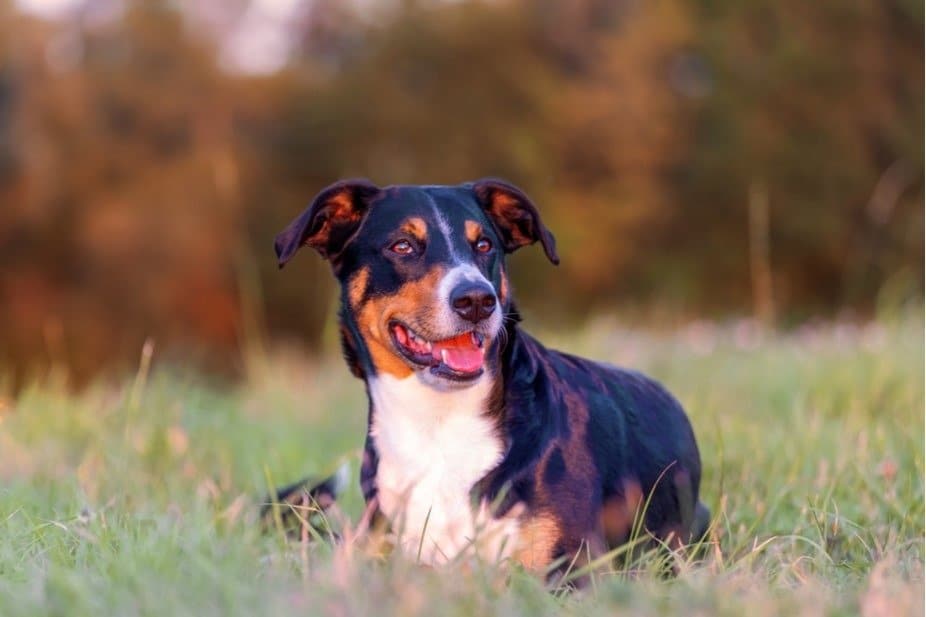
Appenzeller dogs are prone to hip dysplasia.
©Vincent Scherer/Shutterstock.com
Temperament and Behavior
Appenzeller sennenhunds are known for their energetic behavior. They love to run, jump, and play! Mix together a friendly personality and affectionate nature, and you have a great addition to a family with kids. Keep in mind that because this dog was bred as a cattle dog, it has a strong instinct for protecting its territory and herding. So, giving this dog the socialization training while it’s young can teach it the proper way to interact with kids and adults in a household.
Loyalty is one of this dog’s most prominent traits. Its loud bark will alert a household of someone at the door or elsewhere on the property. Intelligence is another trait that makes an Appenzeller easy to train.
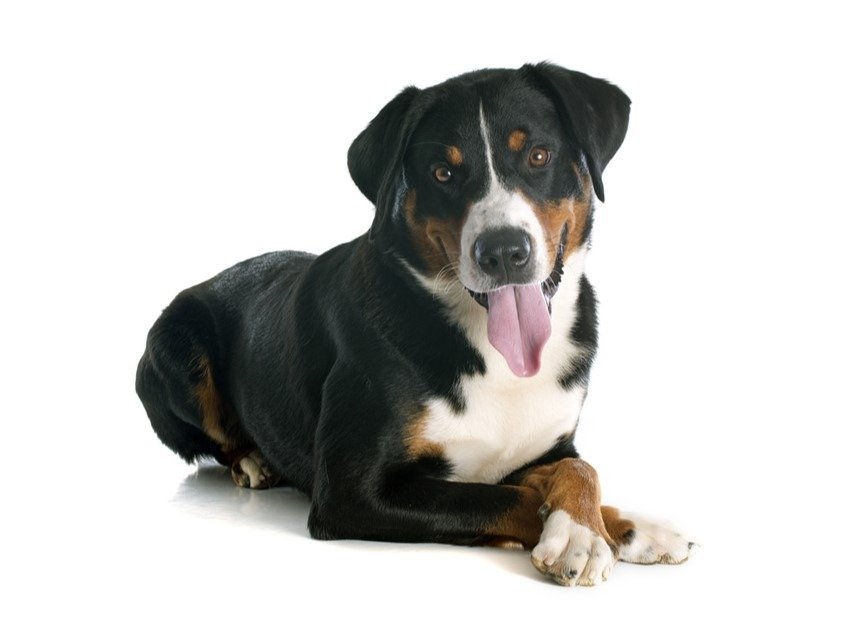
Appenzeller dogs are high-energy and need lots of daily activity.
©cynoclub/Shutterstock.com
How to Take Care of Appenzeller Sennenhund
Learning as much as possible about the dietary needs, exercise requirements, and grooming routine of Appenzeller sennenhunds allows an owner to provide the best level of care for a puppy or an adult dog. Taking into account the unique needs of this dog from the Swiss Alps can help an owner to establish a daily routine that boosts the health of their pet.
The Best Dog Food
When establishing a daily diet, it’s a good idea to take this breed’s common health issues into account. Adult and puppy Appenzellers each have their own nutritional needs. One of the healthiest options for feeding your Appenzeller Sennenhund is a high-protein and nutrient-dense dog food to fuel their constant activity while helping them develop lean muscle mass.
So, we’ve decided at A-Z Animals that the best Appenzeller Sennenhund dog food is Purina Pro Plan Sport, Energy & Vitality Support, High Protein 30/20 Salmon Dry Dog Food & Wet Dog Food.
That’s because the 30/20 protein and fat content offer adequate sustenance for Appenzeller Sennenhunds as an extremely energetic and active breed. There’s nervous system support to help prevent seizures in the form of B12, B1/thiamine, manganese, copper, potassium, and sodium. Additionally, vitamin A helps the eyes and vision, while glucosamine, EPA, and omega-3 contribute to long-term joint mobility.
- Purina Pro Plan 30/20 Sport High Energy, High Protein Dog Food
- Salmon and Rice recipe contains probiotics for digestive and immune health
- Glucosamine and EPA provide joint health and mobility
- Omega-6 fatty acids and vitamin A for healthy skin and coat
Appenzeller adult dog food: Fat in an adult Appenzeller’s dog food provides Omega-6 and Omega-3 fatty acids that contribute to healthy skin and coat. Protein supports the healthy growth of muscle and tissue. The right amount of protein can keep joints in good condition, which can head off hip dysplasia. Vitamin A contributes to good vision for a dog. Good eye health can go a long way to preventing cataracts. Vitamin C is an antioxidant and supports a dog’s immune system. Fiber supports proper digestion.
Appenzeller puppy food: Calcium is an essential ingredient in an Appenzeller puppy’s food. It strengthens developing bones and teeth. Vitamin D also contributes to strong bones. Calcium and vitamin D can help in the fight against hip dysplasia. Fat supplies energy to these fast-moving puppies. Protein builds strong muscles that this dog will use every day as an adult. Vitamin C strengthens a puppy’s immune system so it can fight off illness. Giving a puppy the right amounts of protein, fat, etc., allows it to maintain the proper weight. An obese puppy is more likely to develop heart issues, hip dysplasia, and other ailments.
Maintenance and Grooming
How much does an Appenzeller shed? This dog is a frequent shedder. It has a double coat of short hair that needs to be groomed once per week.
An owner can use a hairbrush with boar’s hair bristles to work over this mountain dog’s coat to remove dead or loose hair. A grooming glove is also effective, especially when brushing the dog’s legs, tail, and face.
The best way to go about brushing this dog is to begin at its head and move in the natural direction of its hair toward its tail.
Part of this dog’s grooming routine should include cleaning dirt and debris from its ears. There are cleaning solutions designed to safely clean a dog’s ears. A soft, clean cloth is perfect for removing debris from its ears to prevent the development of ear infections. If an owner is not sure about how to clean this dog’s ears, they can check with a veterinarian for guidance on the process.

Appenzeller dogs shed a lot. They have a double coat that needs regular grooming.
©MyImages – Micha/Shutterstock.com
Training
This cattle dog is very intelligent and alert, which makes it easy to train. The best way to approach training is to issue short commands in an even voice. Lots of treats and words of praise for learned lessons are effective when training an Appenzeller. These dogs can be sensitive and don’t respond well to harsh voices. A Bernese Mountain dog is another cattle dog that’s easy to train due to its intelligence.
Exercise
Just think. An Appenzeller Sennenhund was bred in Switzerland to chase cattle and bring wanderers back into the herd. Not surprisingly, these dogs love to run, jump, and otherwise stretch their legs outdoors. They need at least one hour of exercise per day to keep them in good physical condition. The exercise also helps to keep their stress level down and stops destructive behavior due to feeling pent-up.
Running in fields and woods, playing ball, and fetching toys are all great activities for this large dog.
Taking it to a dog park may be a good idea, depending on how well an owner’s particular dog gets along with other breeds.
An Appenzeller is not a good choice for someone who lives in an apartment. It’s a large dog which means it’s going to need a larger space to move around in or risk bumping into things. A home with a medium to large backyard would be a better option for this mountain dog. Even with a backyard, an owner should take the dog out for exercise each day. The dog and owner will both be happier!
Puppies
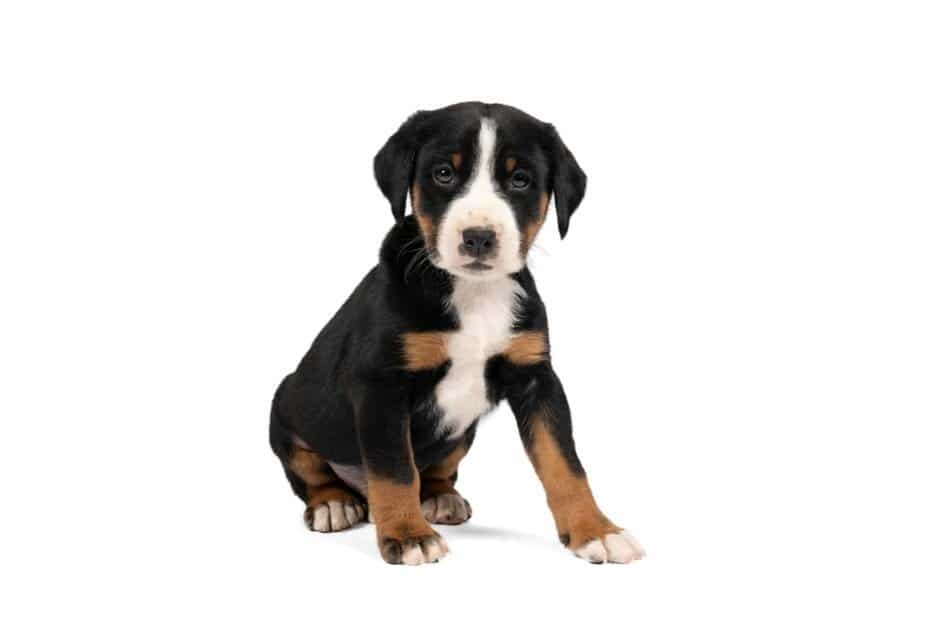
©Leoniek van der Vliet/Shutterstock.com
Feeding Appenzeller Sennenhund puppies the proper amount of food prevents obesity. Obesity in large dog breeds can bring on health issues.
With Children
An Appenzeller that has been socialized from puppyhood is going to enjoy being around children. Keep in mind this is a large dog of substantial weight. An Appenzeller that’s running around and having fun may knock into a small child causing him or her to fall down. The dog didn’t intend to run into the child, but its energy and size sometimes create a mix that causes accidents.
Dogs Similar to Appenzeller Sennenhund
Other dogs that are similar to the Appenzeller include the Bernese Mountain dog, the Entlebucher Mountain Dog, and the Greater Swiss Mountain dog.
- Bernese Mountain dog – This is another Swiss mountain dog, aka a Sennenhund, (pronunciation sennen-whoond), with the same brown, black, and white color mix as the Appenzeller. However, the Bernese Mountain dog is much larger and a member of the working group.
- Entlebucher Mountain dog – This canine is also from the Swiss Alps and was bred to move cattle. But this dog is more appropriate for families with older children, not young kids.
- Greater Swiss Mountain dog – Greater Swiss Mountain dogs grow to be much taller and heavier than Appenzellers. Both dogs are from Switzerland, bred for herding, and full of energy!
Popular Names
Popular names for Appenzeller Sennenhunds include:
- Balthis
- Torkel
- Marti
- Jetmir
- Sacha
- Vreni
- Heide
Appenzeller Dog FAQs (Frequently Asked Questions)
How much does an Appenzeller Sennenhund cost to own?
The initial cost of an Appenzeller Sennenhund is about $1000. This can be more or less depending on the particular breeder and the bloodlines of the dog being sold.
The veterinary costs for this cattle dog range from $500 to $1000. The fees vary according to the specific healthcare services needed for the dog.
The food costs for this dog range from $100 to $150 a month. This is a large dog that needs a certain amount of food to maintain its energy and good health.
Is an Appenzeller Sennenhund good with kids?
Yes, a socialized Appenzeller Sennenhund is good with children.
How long does an Appenzeller Sennenhund live?
The lifespan of an Appenzeller is 12 to 15 years. This breed has been known to live longer than 15 years.
Are Appenzeller Sennenhunds hypoallergenic?
No, this dog is not hypoallergenic.
Are Appenzeller Sennenhunds smart?
Yes. These dogs are known for their intelligence and ability to think quickly when caring for a herd of cattle. They take their responsibility very seriously!
Are Appenzeller Dogs herbivores, carnivores, or omnivores?
Appenzeller Dogs are Omnivores, meaning they eat both plants and other animals.
What Kingdom do Appenzeller Dogs belong to?
Appenzeller Dogs belong to the Kingdom Animalia.
What class do Appenzeller Dogs belong to?
Appenzeller Dogs belong to the class Mammalia.
What phylum to Appenzeller Dogs belong to?
Appenzeller Dogs belong to the phylum Chordata.
What family do Appenzeller Dogs belong to?
Appenzeller Dogs belong to the family Canidae.
What order do Appenzeller Dogs belong to?
Appenzeller Dogs belong to the order Carnivora.
What genus do Appenzeller Dogs belong to?
Appenzeller Dogs belong to the genus Canis.
What type of covering do Appenzeller Dogs have?
Appenzeller Dogs are covered in Hair.
How many babies do Appenzeller Dogs have?
The average number of babies an Appenzeller Dog has is 6.
What is an interesting fact about Appenzeller Dogs?
Appenzeller Dogs are herding dogs by nature!
What is the scientific name for the Appenzeller Dog?
The scientific name for the Appenzeller Dog is Canis lupus.
Thank you for reading! Have some feedback for us? Contact the AZ Animals editorial team.
Sources
- American Kennel Club, Available here: https://www.akc.org/dog-breeds/appenzeller-sennenhund/
- Kidskonnect, Available here: https://kidskonnect.com/animals/appenzeller-dog/
- The Spruce Pets, Available here: https://www.thesprucepets.com/appenzeller-sennenhund-dog-breed-profile-4769092





